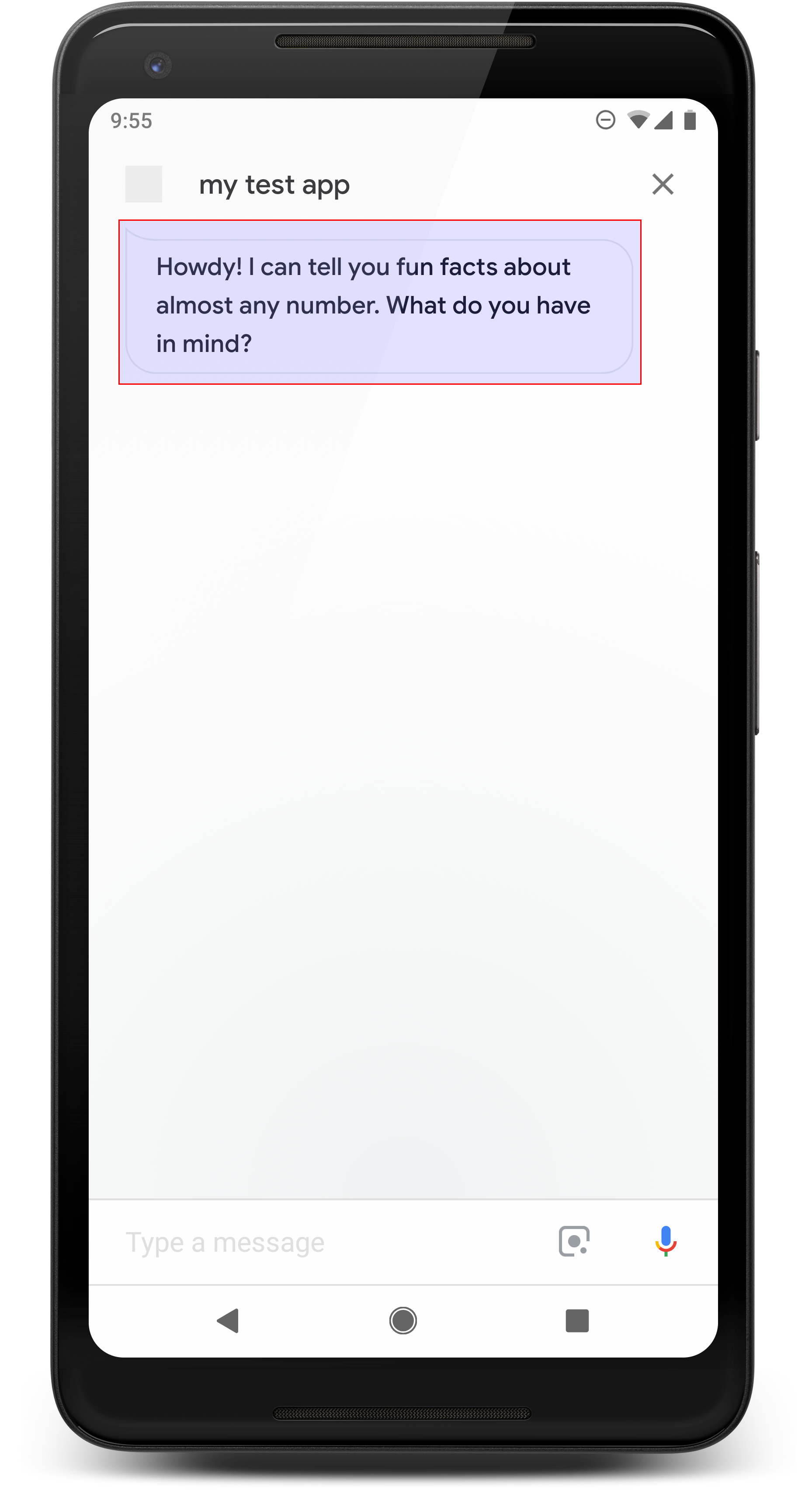
Bei einfachen Antworten wird die Form einer Sprechblase visuell dargestellt und es werden Sprachausgabe verwendet. Speech Synthesis Markup Language (SSML) für den Ton. Durch die Verwendung von einfachen Antworten in Gesprächen können Sie die Nutzer mit einem klaren visuellen und eine Audio-Schnittstelle, die mit anderen Konversationselementen kombiniert werden kann.
Der Inhalt von Sprechblasen in einer einfachen Antwort muss eine phonetische Teilmenge oder eine vollständige Transkript der TTS/SSML-Ausgabe. So können Nutzer besser nachvollziehen, sagt und erhöht das Verständnis unter verschiedenen Bedingungen.
In einem Prompt Text, den du in den Objekten first_simple und last_simple angibst
die Eigenschaften einer einfachen Antwort verwenden. Google Assistant sendet dir alle
in einer Aufforderung und sendet die abschließende umfassende Antwort in der Aufforderungswarteschlange.
Attribute
Der einfache Antworttyp hat die folgenden Attribute:
| Attribut | Typ | Anforderung | Beschreibung |
|---|---|---|---|
speech |
String | Optional | Stellt die Wörter dar, die für den Nutzer in SSML oder Sprachausgabe vorgelesen werden sollen.
Wenn das Feld override in der enthaltenen Aufforderung „true“ ist, gilt Folgendes:
ersetzt die in diesem Feld definierte Sprache das vorherige
des Prompts. |
text |
String | Optional |
Text, der im Chat-Infofeld angezeigt wird. Strings mit mehr als 640 Zeichen beim ersten Wortumbruch (oder Leerzeichen) vor 640 abgeschnitten Zeichen. Wir empfehlen, weniger als 300 Zeichen zu verwenden, um nicht über den Bildschirm hinausragen können, insbesondere in Kombination mit oder einem anderen visuellen Element. Wenn nicht angegeben, rendert Assistant eine Anzeigeversion der
|

Beispielcode
YAML
candidates: - first_simple: variants: - speech: This is the first simple response. text: This is the 1st simple response. last_simple: variants: - speech: This is the last simple response. text: This is the last simple response.
JSON
{ "candidates": [ { "first_simple": { "variants": [ { "speech": "This is the first simple response.", "text": "This is the 1st simple response." } ] }, "last_simple": { "variants": [ { "speech": "This is the last simple response.", "text": "This is the last simple response." } ] } } ] }
Node.js
app.handle('Simple', conv => { conv.add(new Simple({ speech: 'This is the first simple response.', text: 'This is the 1st simple response.' })); conv.add(new Simple({ speech: 'This is the last simple response.', text: 'This is the last simple response.' })); });
JSON
{ "responseJson": { "session": { "id": "session_id", "params": {} }, "prompt": { "override": false, "firstSimple": { "speech": "This is the first simple response.", "text": "This is the 1st simple response." }, "lastSimple": { "speech": "This is the last simple response.", "text": "This is the last simple response." } } } }
SSML und Töne
Verwenden Sie SSML und Sounds in Ihren Antworten, um sie zu verfeinern und die User Experience aus. Weitere Informationen finden Sie in der SSML-Dokumentation.
Sound-Mediathek
In unserer Sound-Mediathek findest du eine Vielzahl von kostenlosen kurzen Sounds. Diese Sounds werden für Sie gehostet, sodass Sie sie nur noch in Ihre SSML-Datei aufnehmen müssen.

